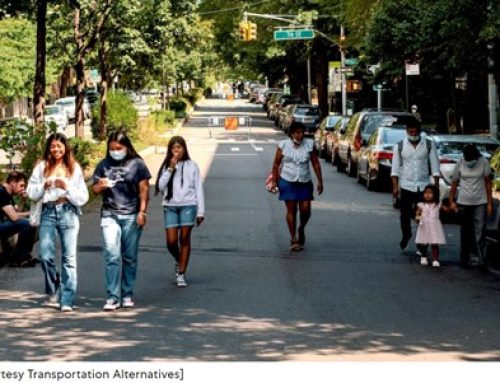An international team led by Stanford University and the University of Washington is working to bring the mental health benefits of nature to city-dwellers.
To do so, the team has created a way of helping city planners, landscape architects, developers and others anticipate the mental health impacts of conserving nature and incorporating it into urban areas. For people in cities, that could mean things like more neighborhood parks, trees planted along streets or better transportation infrastructure to access existing natural areas.
"We have entered the urban century. Cities are farther away from nature, with suburbs gobbling up the pockets of wilderness that used to border them," said Gretchen Daily, senior author of the Science Advances study and faculty director of the Stanford Natural Capital Project. "In all of human history, people have never been so disconnected from nature, and we're becoming ever more so. Alongside this trend, there is a significant increase in some types of mental health disorders worldwide. Our work focuses on the connections between these trends and what we can do about them."
Far from nature
By 2050, close to two-thirds of the global population will live in cities. For people in urban areas, modern living often involves more time spent indoors, on screens and removed from nature. At the same time, worldwide an estimated 450 million people are dealing with a mental or neurological disorder, and many of them live in cities.
In this confluence, experts agree that contact with nature can reduce risk factors for some mental illnesses, improve people's ability to manage life tasks, and enhance memory and attention. The study's researchers hope their model will be especially useful in considering the possible mental health repercussions of adding , or taking away , nature in underserved communities.
"If the evidence shows that nature contact helps to buffer against negative impacts from other environmental predictors of health, then access to these landscapes can be considered a matter of environmental justice," said study lead author Greg Bratman, a former Stanford postdoctoral scholar and current assistant professor at the University of Washington. "We hope this framework will contribute to the discussion."
A walk in the park
The team envisions a scenario where a city planner could incorporate mental health considerations into decisions about new public parks. In the future, those planners may even be able to determine where the park should go, how big the park should be and what kinds of natural elements like trees, grass or a restored river would maximize the potential mental health benefits to the community.
Eventually, the Stanford Natural Capital Project plans to build the mental health ecosystem service into its software platform InVEST, which helps city planners and other decision-makers map and value the many services , like water purification, flood risk mitigation and recreation opportunity , that nature provides to people.
Mental health is one of the newest metrics to be considered an "ecosystem service" , a benefit people receive from the natural environment. But the concept itself isn't new: many governments already consider other valuable ecosystem services during development planning. For example, trees are planted in cities to improve air quality or reduce urban heat island effects and parks are built in specific neighborhoods to encourage physical activity. The mental health benefits of nature should be considered alongside these more established services to deliver a more holistic set of benefits to people, the researchers write.
"Now, the big challenge is to drive this evidence into policies and practices that create vibrant, 21st-century urban spaces to support human health and well-being," Daily said. Soon, she hopes, getting the right dose of nature will be as easy as a walk in the park.
CLICK HERE to view the article on Stanford News.





